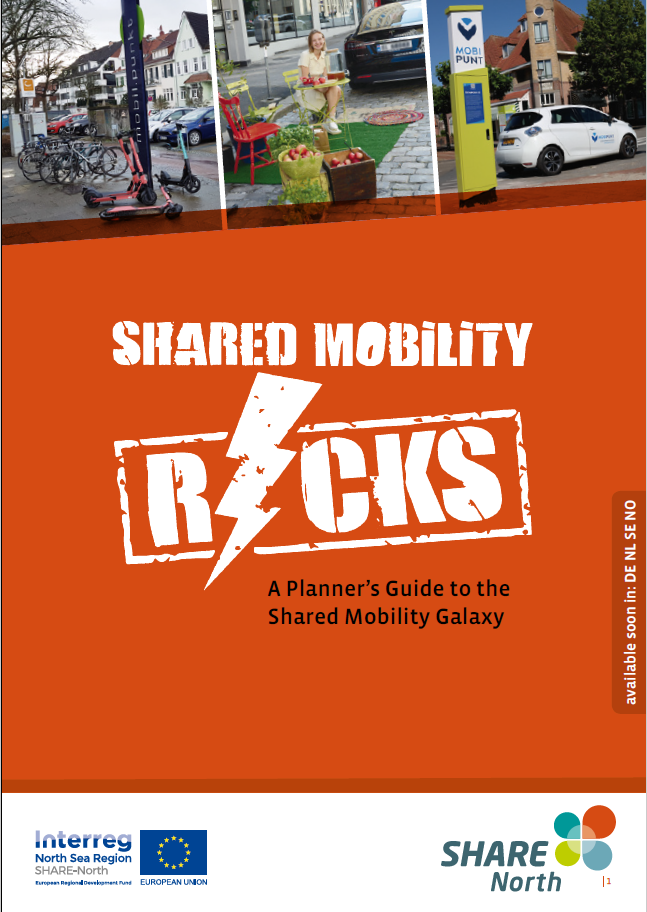The 10 Golden Rules of Shared Mobility – WEBINAR
In this first webinar, the coordinating authors Friso Metz (Advier, NL) and Rebecca Karbaumer (City of Bremen, DE) presented the book and shared the the SHARE-North Project’s vision on shared mobility. Why is shared mobility important? What are the main impacts? This webinar set the scene for the series of 10 webinars on the book.
So, what are the 10 Golden Rule for Shared Mobility?
- Shared mobility is a means to decrease car dependency, to reduce greenhouse gas emissions and to increase the quality of life.
- Shared mobility fosters a shift away from car use and car ownership to multimodality. It enhances the use of zero emission transport modes like walking, cycling and public transport.
- Shared mobility allows for densification of urban areas, while liberating urban space from parked cars and strengthening value of urban green areas, thus increasing the resilience and biodiversity of cities.
- Some shared mobility modes develop slowly and have a strong positive impact on reducing car ownership and greenhouse gas emissions. Other modes develop rapidly, fostered by multinational corporations with investment power and have a more doubtful impact on reducing car ownership and greenhouse gas emissions. The latter modes have a strong appeal to people and get many people on board of shared mobility.
- The more modes of shared mobility that come to exist in an area, the bigger the synergy effects and the highest chance that it provides a more attractive transport alternative to people than the privately-owned car.
- Shared mobility works best in dense areas with governmental support and policies that support the various modes.
- In less dense areas, more guidance is needed to make shared mobility blossom. Multinational corporations are not interested in these areas. The main drivers are local cooperation and synergies with the local business sector.
- Without proper policy frameworks, shared mobility cannot rock. Local governments have to create the essential conditions, while tackling negative aspects in a proactive way.
- Physical integration with mobihubs is essential to make shared mobility visible. Digital integration with MaaS helps to make shared mobility connective and gives it a strong appeal.
- Car ownership is rooted deep in our society. It takes time and effort to raise awareness about new forms of transport. Shared mobility needs clever, consistent communication and marketing over a long period of time.
We will explore these aspects in further detail, link them to the types and impacts of shared mobility and outline them with many practical examples from the SHARE-North project region and beyond in the book and future webinars. Some of them were shared during the webinar today. If you missed it, check out the presentation here.
Find out more about the other webinars in the series, sign up to receive the free PDF of the book or and pre-order the print version of the book here.


 Share North
Share North
